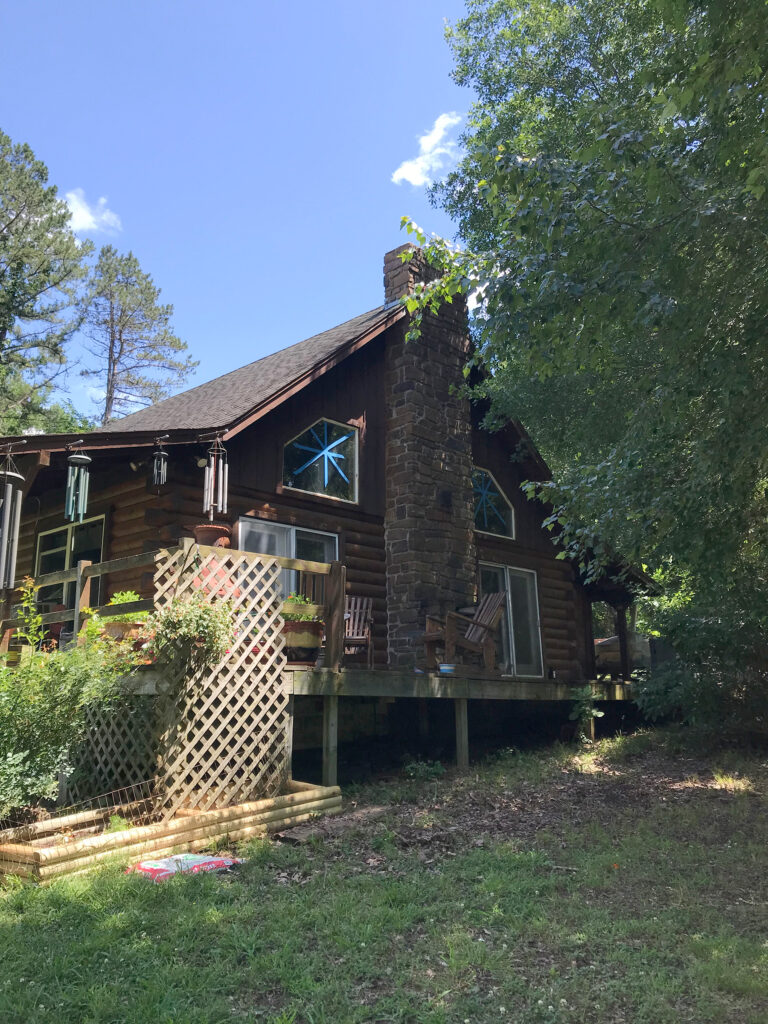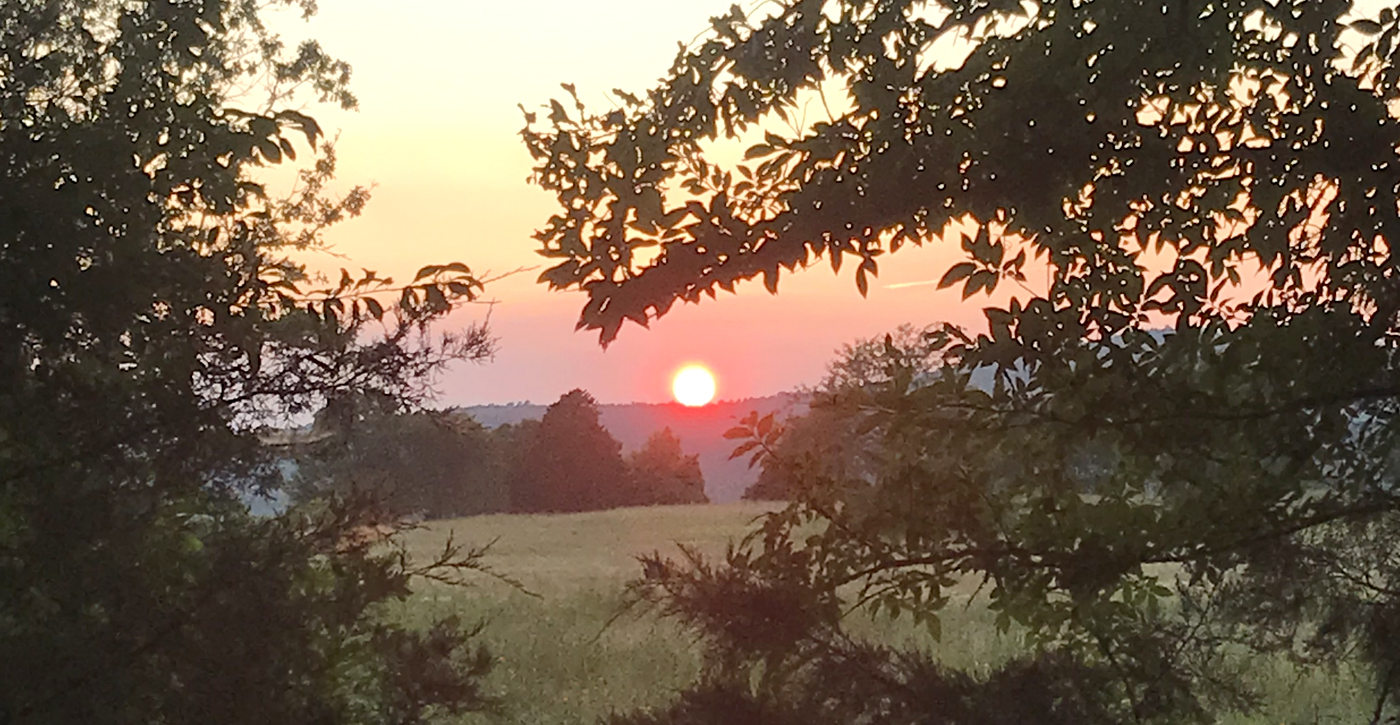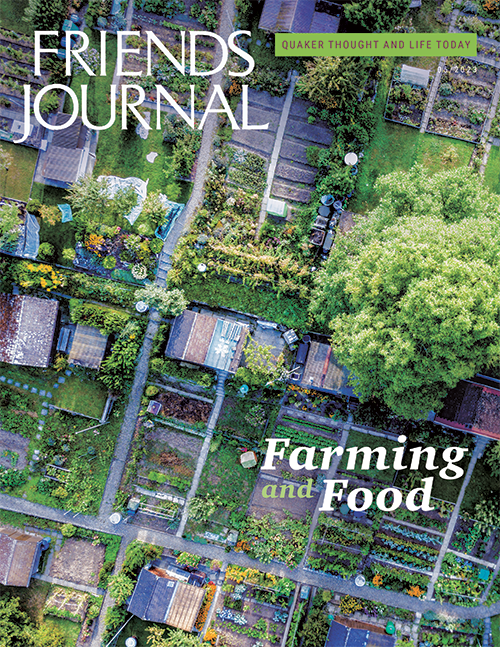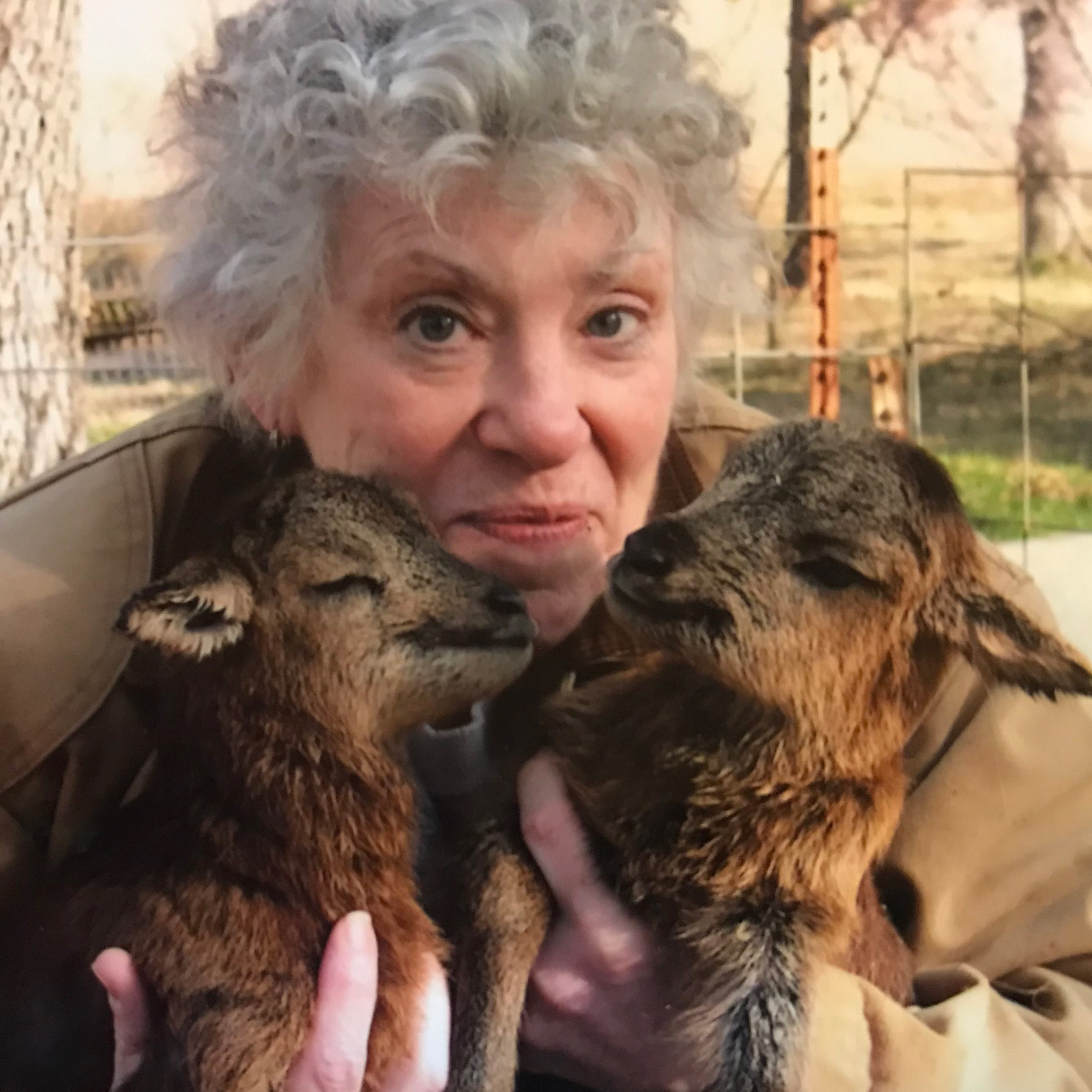Lessons I’ve Learned as a Quaker Farmer
When my husband and I sold our house on the lake and moved to the rural county where I was born 50 years before, I was sure I knew what country living was all about. After all, I had lived on five acres near Keystone Lake—30 miles west of Tulsa, Oklahoma—for four years and had had three organic flower beds and a water feature in my front yard full of frogs, goldfish, and mosquito larva. I’d tramped through the woods to the lakeside with our two llamas every chance I got. Les and I subscribed to Mother Earth News and shopped at a farmers market.
We dreamed of building a log cabin, growing our own organic food, and living off the grid. We already had a few chickens; the above-mentioned llamas, Merlin and Ghirardelli; two black-faced ewes, Bonnie and Jean; four cats; two dogs; and two pot-bellied pigs, Belle and Milo. The plan was simple: we would sell our house, move into my parents’ basement and use their paddocks and out-buildings to shelter our animals, while I taught at the local community college and Les built our cabin in the woods.
With the blessing of our beloved Green Country Meeting in Tulsa, we left our middle-class city life and our careers and moved to Latimer County, Oklahoma, to be farmers. Thus began my evolution from a city-dwelling, animal-loving, vegetarian Quaker to a country-living, still animal-loving, Quaker rancher’s wife, raising our own grass-fed, organic pork and beef. Here, nature has been my teacher; the farm, and surrounding woods, have been the classroom.
Here are some of the lessons I have learned.
Everything eats. The pine tree sucks her nourishment from the poor, rocky soil surrounding our house, stealing the water I use to make my vegetables grow. The chickens scratch up my garden plants, looking for bugs. Raccoons roam all night long, looking for a way into the chicken house, where I lock up the hens every evening in my effort to keep them safe. The chicken snake hides beneath that same chicken house waiting for the mice that feed on the chicken feed that the hens scatter in their rush to eat a supper that may include peelings and leftovers from my garden.
“Life feeds on itself,” Joseph Campbell said. I’ve learned that the priority of life is to sustain life—and to create more life. Realizing this truth is the reason I felt no shame when I started to eat the meat we raised ourselves on our farm. I know each animal. I know that each animal lived a good life and was processed in a humane manner. I am grateful to each one for nourishing me and my family. I cherish this cycle of life.
The Great Chain of Being is a human construct not a divine one. Medieval men believed that men were closer to God than were women, and that mammals were closer to God than frogs. I already knew this wasn’t true, but I didn’t know that, in the natural world, the hierarchy of what is good or desirable or more worthy of survival may not look like my list. I may like roses more than weeds or squash more than squash bugs, but nature does not prioritize. My cats kill songbirds as well as rats. The starlings I don’t like swarm my feeders, chasing the beautiful cardinals and chickadees away. The crows frighten the starlings, and the squirrels chase the crows.
Often I am dismayed, but I remember that everything must eat (see above). Survival depends on singleness of purpose and, sometimes, pure luck or size or sheer numbers. Baby chicks; orphaned fawns; the tiny coyote pup I found beside the neighbor’s barn; the exquisite vulture with the broken wing that I knew would be prey before the night was over; and the two little goats who jumped our fence and that we couldn’t find before the night, and their predators found them: all are precious in His sight. And none survived. Some say nature is cruel. I have learned that nature is honest: the strong survive.
It is important not to anthropomorphize animals. For those of us of a certain age, raised on Bambi and Rudolph and Jiminy Cricket, this is a real challenge. But I’ve learned that animals are animals. They eat; they defecate; they procreate; they try to survive. And even survival is something they don’t think about until the crisis arises. Pets and domestic animals, though they seem to love you as much as you love them, will resort to instinct in times of stress or need. The mother cow, ordinarily benign and gentle, charged me when I got between her and her calf. My beloved Ruby Dee, a heritage breed large black sow, seeking a more comfortable position under the heat lamp, crushed her own little piglets and nearly broke my leg. Anna, the Jack Russell/beagle mix we rescued, killed our beloved peacock. Why? Because she could, and the peacock was there, I guess. I will never know. I think that for those of us who are animal lovers and were raised going to the movies, it is important to realize that Old Yeller may be closer to the truth than Lassie.
Organic gardening is challenging. Sometimes it comes down to hand-to-hand combat. It starts with good soil. They taught us that in the class I took at the extension office in Tulsa before we moved. Our rocky, clay mountain dirt did not qualify. We had to make our own with kitchen waste, chicken house gleanings, llama dung (so nice of them to make it easy for us by creating their own little bathroom at one end of the pasture), grass clippings, oak leaves (we have plenty), just a few cow patties, and time. It makes great compost. Good dirt is a good start, but what do you do during an invasion? None of the commercial sprays, advertising themselves to be organic and safe, seem to work in the heat of battle for that prized tomato or blemish-free squash.
One thing I’ve learned to accept is that nothing is perfect, and a spot or two on an apple or sharing a zucchini with a grasshopper or a little less yield from the green beans are all viable compromises. I’ve also learned to stand quietly and spy the almost perfectly camouflaged tobacco hornworm; pick him off the vine; and deliver him, struggling, to the waiting hens without a smidgen of guilt. I’ve learned to pick off squash bugs and drop them into a solution of soap and water or smash them with my bare hands, if I don’t have time to mix up the detergent solution. I would never have been able to do these things in my city-living days. And now, when I pass the produce aisle at the local grocery store and see the sign that advertises organic vegetables at a considerably higher price than conventionally grown vegetables, I think nothing of paying more for them, because now I know that organic gardening ain’t easy.
Everything in nature is said to have a purpose. Sometimes it is hard to see what that purpose is: fire ants, ticks, poison ivy, chiggers, ice storms, black mold (I’m still struggling with this one). It’s not true, though, that the only animal that kills for the sheer joy of killing is the human animal. I’ve seen the senseless carnage after a racoon gets loose in a hen house. We think it was a mountain lion that killed my little black lamb, Molly, then covered her up without taking a single bite. A big, old chicken snake systematically killed chick after baby chick in our coop, eating none of them. Maybe he planned to go back for them; I don’t know. We killed him before he got the chance. Tears streaming down our faces, my grandson and I chopped the snake into small pieces with a hoe. I would never have been able to do that in my Tulsa days. Even my beloved beagle-mix Anna was a killing machine. I don’t know why. I accept the mystery.
Eventually, everything does seem to balance. It doesn’t happen as quickly as I often would want. The long drought breaks with a nourishing rain that may turn into flood and mudslide, but eventually, in time, the soil is nourished. Summer heat that withers the grass and seems to last forever gradually turns to late summer and then early fall. Winter isn’t far behind, and then new life peeks through the crumbling leaves, and buds appear on branches. It’s spring and the songbirds venture back to join the hearty ones that made it through the winter. We come full circle with summer’s heat and haying time again.
It’s not in the way anymore. Time heals. Another Teacher, the author of the Old Testament book Ecclesiastes reminds us: “There is a time for everything, and a season for every activity under the heavens” (3:1 NIV).
Everything dies. This is the hard lesson: your good old barn cat at the end of his life and your precious pup in the prime of hers; your favorite little red hen and the huge pine tree that was the reason you chose to build your house here in the first place; the “good” snake and the dangerous one; the little sparrow you were trying to save; your beloved daddy . . . and his tractor. Everything comes to an end. Life and death are very real, very close, just two sides of the same coin on our farm, which rests in the shadow of the mountain that has looked over this valley since it rose from the inland sea that once covered it. The mountain that has watched over our family, as we live and die, for generations.
Day follows day. The moon waxes and wanes. Death is part of life. Seeds have to go into the deep, dark earth in order to sprout and grow and produce fruit. Harvest follows planting. And then next year’s planting follows this year’s harvest. Life isn’t linear after all, but a great comforting circle.
And each point on that circle has its appointed time. My grandchildren grew up here. My mother and daddy died here. Hopefully, my great grandchildren will frolic in these fields and forests, too. And my husband and I will die here. It’s the great rotation: “a time to be born and a time to die, a time to plant and a time to harvest, a time to mourn and a time to dance.”

I’m glad we came to the farm 24 years ago. I thought I knew what I was getting into, but I didn’t. I’ve learned a lot of life lessons. I’ve learned a lot of spiritual lessons, too, for, of course, they are the same. I think the Teacher was describing farm life in Ecclesiastes 3:11-14:
No one can fathom what God has done from beginning to end, but I know that there is nothing better for people than to be happy and to do good while they live. That each of them may eat and drink and find satisfaction in all their toil, this is the gift of God.













I ‘chanced’ upon this article and am very grateful I did. There is much wisdom here.
Everything in this story feels so right – I just loved it. Thank you.